
Are You 18 Or Over?
YesOr
No By clicking yes, you certify that you are over 18. By using this website, you agree to our legal disclaimer.605+ Cannabis Strains over 20 Breeders worldwide.
Table of Contents
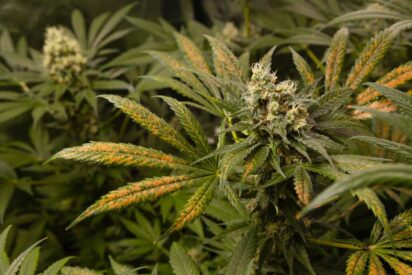
Cannabis plants are similar to other types of plants as these are not immune to nutrient deficiencies. And as an aspiring expert cannabis grower, you must understand and prevent the many different nutrient deficiencies in cannabis plants and know how to cure in the event of any kind of problem.
Take note that to be able to grow healthy plants with good yields, you must learn how to diagnose simple cannabis deficiencies. Here are a few of the most common nutrient problems that cannabis growers encounter.
Cannabis plants require a certain amount of nutrients to survive. If their nutrient needs are not met, this can result in a nutrient deficiency.
Nutrients can be divided into macronutrients and supporting nutrients. Macronutrients are Nitrogen, Potassium, and Phosphorus. These three come in varying amounts and are needed in varying amounts as well. Meanwhile, supporting nutrients are available in minimal amounts but are nonetheless important in cannabis plants’ regular functions.
A deficiency is present when a nutrient is in small amounts. Meanwhile, toxicity is when the nutrient is present in large amounts. Both a deficiency and toxicity are bad for your plants. Your cannabis plants may end up with poor growth and low yields when any of these nutrients are overlooked.
There are different causes of nutrient deficiencies, consider the following:
Also, consider how the fertilizer or supplement is applied to plants or soil. Not following simple instructions could affect the life of your plants.
Nutrient lock in the roots and soil – a condition is known as nutrient lock may affect the way your plants take in nutrients. Nutrient lock happens when there is an excess nutrient that settles in the soil or the roots. This nutrient or mineral can block nutrients from being absorbed causing the nutrients to pool in the roots and plants.
Here is a list of some of the most nutrients and their corresponding ways on how to deal with their deficiencies.
The three macronutrients are the foundation of your cannabis plants. Having a healthy balance of these nutrients gives your plants a fighting chance of growing larger and denser plants. And with all problems that marijuana plants encounter, the soon you find out about it, the easier you can keep your plants healthy and have a higher chance of a good harvest.
Nitrogen is a very important nutrient in plant growth and is widely used therefore it’s not so surprising that it’s easy for plants to develop nitrogen problems. This macronutrient is used in various processes including the manufacture of amino acids needed for plant growth and development as well as chlorophyll as plant food.
With nitrogen, your plants can grow taller, develop more leaves, stems, and roots and can prepare for the growth of larger and denser buds. As you can see, with less nitrogen, all these processes will be affected. Your plants will remain small and with sparse leaves. Adult plants will not be able to develop good and strong parts to hold buds for the flowering stage and there is also a possibility of delayed blooming time.
Nitrogen deficiency symptoms
Nitrogen deficiency treatments
Treatment should be done ASAP otherwise, it may be too late. You must find a way to naturally increase nitrogen and the following can help.
You can tell that your plants are recovering when the yellowing of the leaves has not progressed. The yellow leaves will soon wilt and die but new and green leaves will take their place.
Phosphorus deficiencies are more common in hydroponic systems than in soil-grown plants because the soil is known to have high amounts of phosphorus.
This nutrient is responsible for the growth of roots and for boosting the strength of leaves and stems during the vegetative stage. It prepares the plants in growing large and dense buds. Phosphorus also helps in the germination of seedlings and is very important during the flowering phase.
If there is a phosphorus deficiency during the flowering phase, your plants will grow smaller buds and thus you’ll have smaller yields.
Phosphorus deficiency symptoms
Check for the following symptoms:
Phosphorus deficiency treatments
The following may be used to treat phosphorus deficiency
As with nitrogen and potassium, the effects of your treatment are noticeable after a week. The affected leaves will never recover and return to its regular form and color but new leaves will soon replace these. You will also notice that the symptoms of a phosphorus deficiency have ceased which means your plants are on the road to recovery.
Low levels of potassium are quite common when it comes to growing cannabis plants. This happens because, in most fertilizer products, it has the lowest ratios compared to most macronutrients.s
But just like nitrogen and phosphorus, this nutrient is very important in the growth, health, and development of cannabis plants. Potassium is necessary for water respiration, an important process in plants. It is also a nutrient that’s important in a plant’s natural resistance to different diseases.
Potassium is also vital during photosynthesis as the plant makes food for his use. Also, potassium is helpful in water circulation. It helps water move through the plant which is necessary for the vegetative and flowering phases.
Potassium deficiency symptoms
You may find potassium deficiency symptoms rather unusual but you should treat your plants the moment you notice the first signs of potassium deficiency.
Potassium deficiency treatments
Despite all the weird and irregular symptoms of potassium deficiency, there’s good news. This is one of the easiest nutrient deficiencies to correct. Remember the following
Results your efforts can be readily seen after a week. Same to nitrogen and phosphorus deficiencies, the affected plant parts will never return to their previous states. But you can tell that the treatments are working if the symptoms have ceased.
Magnesium is necessary for the development of strong and healthy plants. Cannabis plants need this nutrient for vein health and the creation of new leaves. Magnesium is utilized for producing chlorophyll.
It is rare for outdoor growers to encounter magnesium deficiencies because it’s a very common nutrient in the soil. This is usually a common occurrence in hydroponic systems. The deficiency starts at the lowest parts of the plant leading to the loss of many leaves. This is why you must deal with magnesium deficiencies right away.
Magnesium tends to move around the body of the plant therefore the symptoms vary and can be seen on different parts of the plant. This is the reason why magnesium deficiency can show up at the bottom of the plant especially on the older leaves causing theses to die.
In severe cases, magnesium deficiency can move up from the bottom leaves to the top of the crown of the plant. This element is vital for the plant’s food manufacturing so don’t overlook early signs.
Magnesium deficiency symptoms
In magnesium deficiency, the symptoms start at the bottom of the plant. Remember the following:
Magnesium deficiency treatments
Treat magnesium deficiency as soon as possible with any of the following:
It can take a week for magnesium treatments to completely work. Expect that the affected plant parts will never recover but new growth will eventually appear to replace these old growths.
Boron deficiency is rare. However, the first sign of boron deficiency should be treated right away. This deficiency is mostly due to the absence of this nutrient in the soil or in the fertilizer or supplement that you use. It is also possible that some nutrients present in high amounts in the roots are affecting the absorption of boron. But despite being a minor nutrient, boron deficiency can also affect the growth of cannabis plants.
Boron deficiency symptoms
You’ll notice the following in plants with boron deficiency:
Boron deficiency treatments
Fix boron deficiency right away to avoid damaging effects to plants.
You will know that your boron deficiency treatment is working when the symptoms are not progressing. The damaged leaves will not return to their regular appearance but new, green, and strong leaves will soon grow. Depending on the treatment you used, it can take days to a week before your plants can recover.
Calcium deficiencies are common in cannabis plants grown indoors in hydroponic systems. It is also a common deficiency in areas where calcium is not added to local water irrigation systems. If you are using a hydroponic system and adding nutrients to water in your reservoir solution then you may be forgetting a good calcium source. Also, incorrect soil and root pH can lead to calcium deficiency. Overlooked calcium deficiency can lead to frail plants, poor growth, and reduced yields.
Calcium deficiency symptoms
You’ll find the following in plants with calcium deficiency:
Calcium deficiency treatments
Thankfully, calcium deficiency is very easy to treat. Just use any of the following.
You can tell that the calcium treatment that you used is working when the symptoms of calcium deficiency are no longer progressing. However, the leaves and stems/branches affected will never return to their previous appearance.
Copper deficiencies are very uncommon but overlooked copper deficiency can lead to poor growth and poor new growth of leaves. Despite being a minor nutrient, copper is needed by plants to grow, make food, and to create dense and big buds.
Copper deficiency symptoms
The following is present in plants with copper deficiency:
Copper deficiency treatments
Here are a few practical ways to treat copper deficiency:
The affected parts will never return to their previous states and will only wilt and die. You will only be able to tell if the treatment you’re using is working when the symptoms are no longer progressing.
Iron deficiency in cannabis plants can be seen in new growths most especially the leaves. Therefore, the upper leaves are most affected and are usually discolored. The symptoms of iron and manganese deficiencies may look the same but iron deficiencies affect new growths.
You must correct iron deficiencies right away because these may affect the growth of your plants and can also reduce yields. Take note that iron plays a huge role in chlorophyll production in cannabis plants.
Iron deficiency symptoms
Check for the following symptoms of iron deficiency:
Iron deficiency treatments
Consider the following when correcting iron deficiency:
Once iron treatments have been provided, it takes only a few days for your plants to recover. You can tell that your plants are slowly recovering as the symptoms are no longer progressing. Sadly, the affected parts will never return to their previous condition. New growths will soon replace these affected parts.
Manganese deficiency is uncommon and will usually occur together with zinc and iron deficiencies. This mineral is needed in food production in plants as it is vital for chlorophyll and in the creation of nitrates. Take note that too much manganese can lead to iron deficiency.
Manganese deficiency symptoms
You should notice the following when your plants are suffering from manganese deficiency:
Manganese deficiency treatments
Consider the following when treating manganeses deficiency in cannabis plants:
Correct manganese treatments will work in a few days and you can tell that your plants are recovering when the symptoms of the deficiency are no longer progressing. The affected parts will never recover. New healthy growth will only replace them.
It is uncommon to have molybdenum deficiencies in cannabis plants but this can happen whether you’re growing your plants in soil or hydroponics. Only a very small amount of this nutrient is needed to support the growth and development of plants but the absence or very low amounts of molybdenum can cause devastating effects to plants.
Molybdenum deficiency symptoms
You’ll find the following symptoms in cannabis plants with molybdenum deficiency:
Molybdenum deficiency treatments
Treat molybdenum deficiency with the following techniques:
You can tell that molybdenum treatments are working when the deficiency symptoms are not progressing. The affected plant parts will never return to their previous appearance but will simply wilt and fall from the plant.
Silicon deficiencies are often found in indoor hydroponic systems this is because this nutrient is abundant in nature. Silicon is needed in plant production and development and thus, deficiencies can lead to poor plant growth and development. It is also needed in the natural pest control properties of cannabis. You will soon notice that pests are more plentiful
Silicon deficiency symptoms
You can tell that your cannabis plants lack silicon when you notice the following:
Silicon deficiency treatments
Silicon deficiency is very rare in plants therefore you should be cautious in applying a treatment. Always check for the presence of other nutrient deficiencies or causes before suspecting silicon deficiency.
Silicon deficiency is treated by any of the following:
After providing proper silicon treatments, it can take a week for your plants to recover. You can tell that the treatment you used is working if you find that the symptoms are not progressing. The affected leaves and stems will never recover however new and healthy ones will take their place.
Sulfur deficiency is very rare because most fertilizers have adequate amounts of sulfur. But sometimes, the poor absorption of other minerals and incorrect pH can affect the absorption of sulfur.
This nutrient is important to many cannabis plant’s vital processes such as food manufacturing, growth of the root system, and overall development.
Sulfur deficiency symptoms
You can tell that your plants have a sulfur deficiency when you find the following symptoms:
Sulfur deficiency treatments
Take note of the following sulfur deficiency treatments:
When sulfur deficiency treatments are applied correctly, it can take days for your plants to recover. Don’t expect an instant fix. You will notice that the symptoms are not progressing and this means that you have successfully overcome this problem.
Also, the affected leaves and stems will never return to their previous appearance. New and perfect foliage will simply grow to take their place.
Cannabis plants require very small amounts of zinc but most of the time, zinc deficiencies occur. This can happen during the growing phase of the flowering phase as well. Usually, zinc deficiencies can occur together with iron and manganese deficiency.
Cannabis plants need zinc to support many plant processes such as the development and creation of different enzymes.
Zinc deficiency symptoms
You can tell that your plants have zinc deficiency when you spot these symptoms:
Zinc deficiency treatments
Consider the following treatments when treating zinc deficiencies:
Be careful in trying to apply zinc supplements because plants need only a small amount of this nutrient. As with all nutrient deficiencies, it can take days before your plants recover from zinc deficiency. The affected stems and leaves won’t recover but new foliage will surely grow to replace the diseased ones.
Cannabis deficiencies happen in indoor or outdoor growing areas. You must prevent and take extra care when applying fertilizer or supplements and never overlook any kind of symptoms no matter how minimal it may be. Cure nutrient deficiency to help your plants achieve good health and good yields.
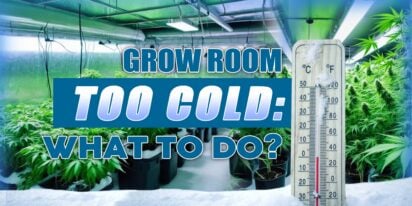
[ez-toc] In indoor gardening, maintaining an optimal temperature within your grow tent is crucial for the health and productivity of your plant

[ez-toc] Welcome to the delightful world of cannafudge crafting, where sweetness meets sophistication, and cannabis infusion adds a unique twis
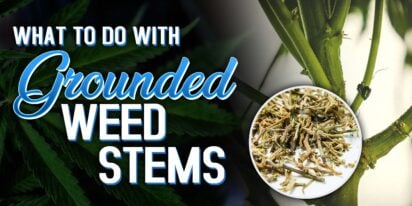
[ez-toc] You’ve finished trimming your weed, but what about those leftover stems? Don’t throw them away! These seemingly useless bits can a

Feeling high can be an exhilarating experience, but it's essential to make the most of it by engaging in activities that enhance the sensation a
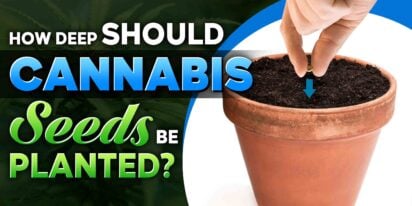
[ez-toc] Starting with planting cannabis seeds might seem simple, but how deep should cannabis seeds be planted for them to grow well. In this
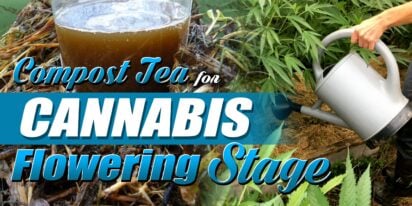
[ez-toc] In the realm of cultivating cannabis, maximizing growth during the flowering stage is a top priority for growers. While various method
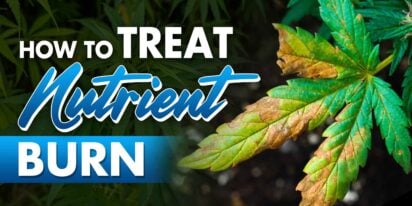
[ez-toc] Nutrient burn is a common issue among plant enthusiasts, often resulting from over-fertilization or improper nutrient application. It
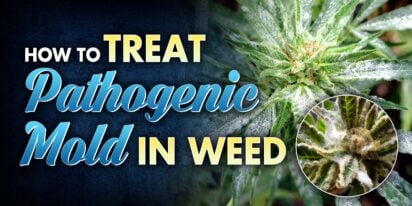
[ez-toc] Welcome to our complete guide to dealing with harmful pathogenic mold in cannabis. For those who grow cannabis, preventing mold is vit

In recent years, there has been speculation about “did Shakespeare smoke weed?” This idea originates from a study by South African anthropol
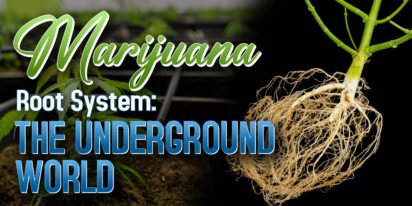
[ez-toc] Welcome to the hidden world beneath the soil – the inside of the marijuana root system. While the vibrant leaves and resinous flower

Are You 18 Or Over?
YesOr
No By clicking yes, you certify that you are over 18. By using this website, you agree to our legal disclaimer.